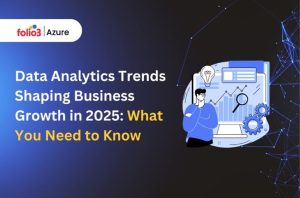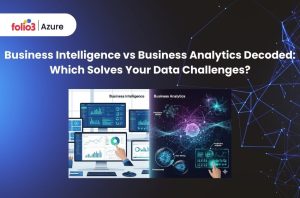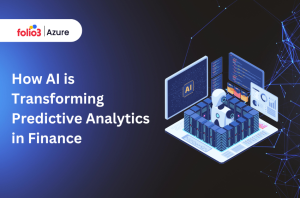Table of Contents
ToggleAI adoption is skyrocketing, a Stanford report notes, roughly 78% of companies now use AI in some capacity. Yet this growth brings new data challenges. AI systems depend on vast datasets, and without proper oversight, even unstructured or sensitive data can slip into models unchecked.
AI data governance addresses these risks by applying governance policies and controls across the AI lifecycle from data collection and labeling to model training, deployment, and monitoring. In practice, AI data governance means enforcing security, quality, privacy, and ethical standards on the data and models that power AI.
For example, data governance for AI ensures responsible, secure, and compliant data management throughout the AI lifecycle, covering data security, lineage, quality, compliance, and fairness. This foundation of trustworthiness is essential: an AI system is only as reliable as the data behind it.
What is Data Governance in AI?
AI data governance is not separate from traditional data governance; rather, it extends it to address AI’s unique needs. Data governance normally covers enterprise data broadly (databases, data lakes, IoT, etc.), while AI governance focuses on the subset of data and processes driving AI/ML models.
Meanwhile, AI initiatives are just one part of DG’s concern. As AI capabilities grow, organizations also need dedicated AI governance frameworks to manage the distinct challenges surrounding their development and use.
In other words, data governance provides the foundation (policies, stewardship, catalogs, compliance, etc.), and AI-specific governance adds layers for model risk, bias, and advanced privacy controls. Together, they ensure that data used in AI is trustworthy, properly handled, and used ethically.
Key Principles of AI Data Governance

Data quality: Ensuring data is accurate, complete, and consistent is vital for AI models to work reliably. High-quality data reduces errors and bias in AI algorithms.
Data stewardship: Assigning clear roles (data owners, stewards, custodians) ensures accountability for every dataset. Data stewards oversee the AI data lifecycle and enforce policies.
Data privacy and security: Protecting sensitive information is paramount, especially given AI’s appetite for data. Robust security measures (encryption, access control) and privacy safeguards (PII redaction, anonymization) keep training and inference data safe.
Transparency and accountability: Maintaining documentation, audit logs, and explainable processes builds trust. Audit trails allow stakeholders to understand how data flows into AI models and how models make decisions.
Regulatory compliance: Adhering to data protection laws (GDPR, CCPA, etc.) and emerging AI regulations prevents legal penalties. Governance frameworks embed compliance checks so AI use remains within legal and ethical bounds.
Risk mitigation: Proactively identifying and addressing data risks (privacy breaches, bias, data drift) prevents incidents. This includes bias testing, privacy impact assessments, and regular audits to stop data issues before they affect AI outcomes.
Why Data Governance Matters in AI
There are multiple reasons to integrate data governance in AI, and below are the most crucial instances for which data governance deployment becomes mandatory:
Hidden Data Vulnerabilities in AI Systems
AI systems introduce data risks that traditional governance alone may not catch. For instance, when training on enormous datasets, hidden vulnerabilities arise: personal information can inadvertently be embedded in neural networks, creating stealth leakage paths. Unlike regular databases, you cannot simply “scan” a trained model for hidden PII – mismanaged data can lurk undetected.
New Attack Vectors Unique to AI
Similarly, AI’s flexible interfaces (natural language prompts, visual inputs) open new attack vectors not present in old-school apps. A simple user query might trigger unexpected behavior or prompt injection attacks unless carefully controlled.
The Challenge of Scale and Complexity
Other challenges include data complexity and unpredictability. AI adoption has more than doubled recently, and models often pull from diverse sources (text, images, sensors, etc.). Managing such a scale and variety of data is exponentially harder than before.
Risk of Unreliable AI Outputs
Moreover, AI outputs can be chaotic: a model might produce nondeterministic or edge-case responses, making testing and validation very expensive. Altogether, these issues make continuous oversight essential.
Consequences of Poor AI Data Governance
Without strong governance, the consequences are severe. Organizations risk regulatory violations and hefty fines (for example, the EU’s upcoming AI Act can penalize violations up to €35 million ). Sensitive data could leak through an AI assistant or be used improperly. Models may drift or degrade if underlying data quality isn’t monitored, leading to poor decisions.
Data Governance Frameworks for AI
To organize governance efforts, many organizations adopt formal frameworks or standards. These frameworks lay out structured approaches to data handling, risk, and compliance. Examples include:
NIST AI Risk Management Framework (RMF): A comprehensive guide for managing AI-related risks. It spans all stages (plan, collect data, build models, operate, etc.) and emphasizes data integrity at each step. Notably, a survey found 42% of organizations implementing AI leverage NIST’s AI RMF as a foundation.
Privacy & Cybersecurity Frameworks: NIST is also creating a Data Governance and Management (DGM) Profile that aligns the Privacy, Cybersecurity, and AI RMF frameworks. This recognizes that data governance underpins privacy and security in AI. Using these frameworks together helps ensure data protection and compliance.
Data Governance Models: Established DG frameworks (like EDM Council’s DCAM, DAMA’s DMBOK, COBIT) define data roles, processes, and metrics. These can be extended to AI by adding ML-specific policies.
Regulatory Guidelines: Governments and industry groups are publishing AI governance guidelines. The EU’s AI Act, for instance, categorizes AI systems by risk and requires documentation, bias mitigation, and human oversight. Compliance with such laws is integral to AI data governance.
Ethical Standards: Voluntary principles (OECD AI Principles, IEEE, ISO/IEC standards) outline ethical data use and transparency. Organizations often map their policies to these principles for internal guidance.
In practice, a strong governance program will triangulate these resources: embed organizational policies (steeped in DCAM/DMBOK practices) alongside AI-specific standards (NIST AI RMF, EU/US regulations). This ensures both the data and AI components are covered by “guardrails” at every level.
Core Components of AI Data Governance
Building an AI-ready governance framework means integrating several key elements throughout data pipelines:
Data Ownership & Stewardship: Assign clear responsibility for data sources. Data owners and stewards should catalog AI datasets, set usage policies, and ensure custodians follow rules. Explicit data ownership aligns accountability with data flows.
Data Quality Management: AI models depend on high-quality inputs. Implement automated quality checks (accuracy, completeness, consistency) and anomaly detection. Flag or reject poor data to prevent “garbage in, garbage out” AI outputs.
Metadata and Lineage: Capture rich metadata (data source, date, schema, sensitivity tags) and maintain full lineage across AI pipelines. This transparency allows teams to trace any output back to the originating data, which is essential for audits and problem diagnosis.
Bias Detection & Fairness: Include processes to detect and mitigate bias in both data and models. Use statistical tests and diverse datasets, and document model behavior. Governance should enforce fairness checks to prevent discriminatory outcomes.
Privacy and Security Controls: Apply privacy-preserving techniques (differential privacy, anonymization) and robust security measures. Data should be encrypted at rest/in transit, stored in secure environments, and accessed only by authorized personnel.
Lifecycle Management: Govern the entire data lifecycle. Define retention and deletion policies for AI data. Remove or archive obsolete or risky datasets to limit exposure and ensure new data enters under governance controls.
Model Governance: Extend governance to the models themselves. Track model versions, parameters, and training data snapshots. Continuously monitor model performance for drift or anomalies, and incorporate human-in-the-loop feedback to correct errors.
AI Data Security and Privacy: Preventing Breaches
AI systems introduce novel cybersecurity and privacy challenges. To safeguard sensitive data and maintain integrity, treat AI data with the same rigor as other critical systems. Key best practices include:
Data Classification & Encryption
Label data by sensitivity before it enters any AI pipeline. Apply strong encryption (e.g., AES-256) at rest and TLS for data in transit. Modern guidelines stress that encrypted storage and zero-trust architectures (secure enclaves) are essential to prevent unauthorized leaks.
Access Controls
Enforce fine-grained permissions on AI training and inference data. For instance, AWS recommends role-based access checks on user prompts and source data, ensuring users only retrieve data they’re authorized to see. Input logs should be scrubbed of sensitive inputs, and systems should reject dangerous prompts that could expose confidential information.
Privacy-Preserving Techniques
Use methods like anonymization, tokenization, and differential privacy when handling personal data. The U.S. cybersecurity guidance explicitly recommends federated learning and differential privacy to reduce exposure of PII while still enabling AI development. These techniques add statistical noise or distribute learning so that raw personal data is never aggregated centrally.
Logging & Audit Trails
Maintain detailed logs of data access and AI outputs. Track data provenance and model queries end-to-end, so you can audit exactly what went into a model. The same CISA/NSA guidance urges organizations to keep cryptographically signed provenance records, which make tampering extremely difficult.
Continuous Monitoring
AI data (and models) should never be “set-and-forget.” Implement runtime monitoring to detect anomalies or attacks (e.g., data poisoning or model inference leaks). Periodically reassess risks using formal frameworks like NIST’s AI RMF or SP 800-37. Automated tools can scan training data for unusual patterns and ensure that new data ingested by the model meets governance criteria.
Incident Response Plan
Prepare for breaches with an AI-specific incident plan. This includes quickly identifying compromised models or data, containing exposure (e.g., disabling model access), assessing impact, and notifying affected stakeholders. Incorporating AI scenarios into your data incident response ensures that if a model inadvertently reveals sensitive information, the organization can react promptly.
These measures together form an AI cybersecurity posture. The accuracy, integrity, and trustworthiness of AI outcomes are only as strong as the data used to build and run them. By embedding encryption, provenance verification, and monitoring from the very first phase through deployment, organizations greatly reduce the chances of an AI-related data breach.
AI Governance Best Practices and Steps
Based on industry guidance, a practical five-step program can help organizations implement AI data governance effectively:
1- Charter Governance
Establish a formal AI governance charter with defined roles. Assign data stewards and data owners for each AI project, and publish clear policies addressing AI-specific risks (such as prompt injection, model bias, and data retention). Ensure leadership accountability by aligning data policies to business goals.
2- Classify and Catalog Data
Deploy automated classification to tag sensitive or regulated data before it enters AI pipelines. Build (or extend) a data catalog that includes AI training datasets, with metadata about origin, schema, and sensitivity. This makes it possible to track lineage and enforce policies on every piece of data used.
3- Control Access and Usage
Implement fine-grained access controls on AI data sources and tools. Use role-based permissions and data masking so that even within the AI team, only authorized users and processes can see raw data. Integrate data-leak prevention (DLP) tools to scan input prompts and outputs, scrubbing or blocking any attempt to input or output disallowed data. Minimize data wherever possible (e.g., use only anonymized data for training).
4- Continuous Monitoring
Set up real-time monitoring of both data flows and model behavior. Track data lineage end-to-end so changes are logged. Use automated quality checks and anomaly detection on incoming data. Include mechanisms for users to flag AI outputs for review. Regularly audit models against governance rules. For example, implement checks that verify the AI’s answers don’t violate privacy rules or encode bias.
5- Iterate and Improve
Data governance is not a one-time project. Periodically review audit logs, feedback reports, and regulatory changes to refine your policies. As new data sources are added or new AI use cases emerge, update classifications and controls. Incorporate lessons learned (e.g., from near-miss incidents) into training and policies. Continual improvement ensures the program stays aligned with evolving AI risks and business needs.
Managing AI Data Risks and Ensuring Compliance
Effective AI data governance also means preparing for worst-case scenarios. Organizations should conduct formal risk assessments for AI projects, covering data, model, and output risks. Key considerations include:
Regulatory Compliance
Align AI data use with laws and industry standards. For instance, the EU AI Act (adopted in 2024) imposes strict requirements on high-risk AI systems, including detailed documentation and bias mitigation. Non-compliance can incur heavy fines (up to €35 million or 7% of global revenue). Similarly, AI projects using personal data must respect GDPR/CCPA rules. By embedding compliance checks into governance (data inventories, consent management, DPIAs), companies avoid legal and financial fallout.
Incident Response for AI
Prepare an incident response plan that includes AI-specific scenarios (e.g., a model inadvertently revealing sensitive training data, or an adversarial attack on an AI service). This plan should define how to isolate affected systems, notify legal and compliance teams, and remediate the issue. Some experts recommend regularly simulating AI breaches (like “red-teaming” models) to test readiness.
Ethical Oversight
Beyond technical risks, consider the ethical impact of AI data. This means reviewing data sources for potential bias or unfairness, and confirming that data use aligns with organizational values and societal norms. Establish an ethics review process or committee to audit AI projects. While not purely a security issue, ethical oversight is increasingly seen as part of AI data governance and risk management.
Audit Trails and Transparency
Maintain records of all data and model changes. Having robust audit trails (who accessed which data, what was changed, model training runs, etc.) makes it easier to investigate problems and demonstrate due diligence to regulators. AI governance best practices emphasize transparency, for example, storing model cards or data lineage diagrams that can be inspected by auditors or regulators.
By treating AI data like any other critical asset, risk-wise, organizations stay ahead of threats. Using best practices for data classification, cryptographic integrity checks, secure enclaves, and continuous assessments helps build a resilient foundation for AI. When unexpected issues arise (from bias to breaches), this preparation ensures a faster, more effective response and ultimately, greater trust in AI solutions.
Data Governance Challenges in AI
Despite best efforts, many organizations struggle with AI data governance. Common pitfalls include:
Hidden Data Flows: AI projects often draw from many sources. Without centralized catalogs, data can slip through unofficial channels. Sensitive data in niche systems may unknowingly be used for model training. Lack of comprehensive metadata can leave gaps.
Siloed Policies: Different teams (IT, security, privacy) may have conflicting rules for data use. AI can fall into gaps if no one “owns” the governance holistically. Central coordination is needed to avoid one group bypassing another’s controls.
Unexplainable Models: Complex models (deep learning, ensemble systems) can be opaque. This makes it hard to audit why a model made a decision or to verify that only approved data was used. New tools for explainability and model documentation are needed, but they are still evolving.
Rapid Regulatory Change: Laws and guidelines for AI are moving targets (we saw a flurry of new proposals in 2024-25). Staying compliant requires agility and constant policy updates, which can lag behind AI development cycles.
Resource and Skill Gaps: Effective AI governance demands expertise in data science, security, law, and ethics. Many companies find it hard to assemble a cross-disciplinary team or secure executive buy-in for governance investments.
Monitoring Overhead: Comprehensive testing and auditing of AI systems (for all edge cases and data drifts) can be prohibitively expensive. Organizations must balance thoroughness with practical constraints, often relying on automation and targeted audits to cover most risks.
Being aware of these challenges is the first step. Successful programs address them by fostering a “data governance culture”: continuous education for AI teams, executive oversight, and clear communication of policies.
Conclusion
AI data governance is no longer optional; it’s essential for any enterprise seeking to harness AI responsibly. In summary, a holistic AI data governance program should define who is responsible for data, classify and protect all data used in AI. It should monitor data flows and model outputs continuously, and adapt policies as risks and regulations evolve.
This approach not only prevents costly breaches and compliance fines but also unlocks the full value of AI by ensuring its data foundations are rock-solid. Adopting these practices will help enterprise leaders and CTOs confidently scale AI across the organization, knowing that data integrity, privacy, and security remain safeguarded at every step.
Looking to implement enterprise-grade data governance for your AI systems?
As a certified Microsoft Azure Partner, Folio3 specializes in helping organizations build secure, compliant, and scalable AI ecosystems on Azure. From implementing unified data governance frameworks to managing AI risk across the lifecycle, we provide end-to-end solutions that align your AI innovation with enterprise data integrity and security standards.


